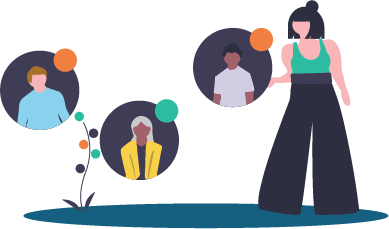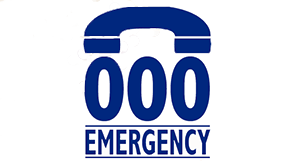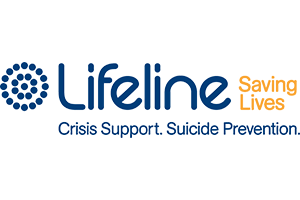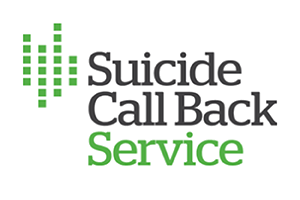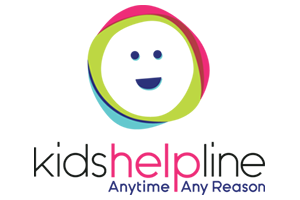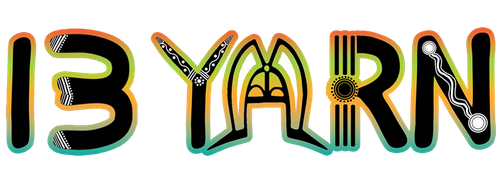Looking after ourselves
- Mark Discussion as New
- Mark Discussion as Read
- Float this Discussion for Current User
- Favourite
- Subscribe
- Printer Friendly Page
- Mark as New
- Favourite
- Subscribe
- Get link
- Flag for Moderator
28-03-2024 10:37 PM
28-03-2024 10:37 PM
Re: Counting Sheep ~ The Importance of Sleep!
Thank you for the invite @Jynx . Could be the most important thread on here, and here's me,
an imposter passenger. I sleep better than a baby. Too much in fact, and no pattern to it. Too many
times I am halfway through a, dream transplant, logged into sane, and I just . . . nod off. Thank goodness for auto save.
I'm a bit like you @Jynx Imagination can take me anywhere, including the land of dreams.
I too have the blessing of brain injury so I still am, much of the time, lost in the world of play.
Have no filters, If its in my head. . . its out my mouth, or pen, and so . .. No baggage in the bed room.
I do have an underground sound proof room, but well you know, silence can be filled with "the' noise.
The harder I try to stay awake, the faster the curtains come down.
We have a sleep study technician
on this flight... @PinkFlamingo .. That's very handy. and I see @SmilingGecko is on board. My go to when my sleep deprived doctor has dead candle eyes.
Well . . . hope everyone can close there eyes tonight and enjoy the 'inflight movies'.
@Shaz51 @MermaidHair @MedicinalGypsy you and smiling gecko must have a practice in
Dream Town.. @PeppiPatty and all the other folks in search of the mythical city of dreams..
Peaceful thoughts. tonys..
- Mark as New
- Favourite
- Subscribe
- Get link
- Flag for Moderator
29-03-2024 12:12 AM
29-03-2024 12:12 AM
Re: Counting Sheep ~ The Importance of Sleep!
Hey @Jynx
great read… thank you for your honesty…
im wondering if you can shut your eyes and just focus on all that bright and very black spots and focus on them and does that get you fast asleep ?
when I
was younger, I never could sleep. I cannot remember a time of living without
big anxiety to just get through without thinking that I was about to drown.
but today, well I’m very interested in that apparatus that @PinkFlamingo posted. I listen to : Dr James Doty a neurosurgeon who
teaches compassion at Stanford University called The Magic Shop,’ or
Jon Kabat Zinn,
Some more….
I can usually, sit somewhere, shut my eyes, focus on the spots of bright and shades of black right in front of me, and I’m straight asleep.
I-never have bad dreams although I used to before 14 years old. I even remember them.
I’ve just begun HRH ( menopause] pills which…. Um is helping me to sleep better as this year, I stopped being about to sleep.
- Mark as New
- Favourite
- Subscribe
- Get link
- Flag for Moderator
29-03-2024 01:33 AM
29-03-2024 01:33 AM
Re: Counting Sheep ~ The Importance of Sleep!
- Mark as New
- Favourite
- Subscribe
- Get link
- Flag for Moderator
29-03-2024 10:01 AM
29-03-2024 10:01 AM
Re: Counting Sheep ~ The Importance of Sleep!
Thought of you and how your household sleeping is going?
- Mark as New
- Favourite
- Subscribe
- Get link
- Flag for Moderator
29-03-2024 11:13 PM
29-03-2024 11:13 PM
Re: Counting Sheep ~ The Importance of Sleep!
@Shaz51 , thank you for asking.
Not great, my husband wakes up several times at night not being able to sleep and then unfortunately wakes me up in the process as I am such a light sleeper. He takes pills to help him sleep but still manages to wake up during the night.
At least the kids are sleeping through the night 🙂. How is your sleep and Mr Shaz's sleep going?
Xx 🥰
- Mark as New
- Favourite
- Subscribe
- Get link
- Flag for Moderator
30-03-2024 12:05 AM
30-03-2024 12:05 AM
Re: Counting Sheep ~ The Importance of Sleep!
The hospital in 2022 tried to list it as Primary Insomnia, but it is very much Secondary as a response to external circumstances and it is not insomnia (Defined by criteria like waking up feeling sluggish or daytime fatigue)
My sleep troubles have been life long. In infancy, my mother who was deaf would obviously not hear a baby crying in his cot
Primary school, between mum growing up on a farm and her alcoholism, she was just a morning person and asleep early. So we were left to put ourselves to bed. I'd watch the 8:30pm movie then stay up and read typically one whole novel a night. The late nights resulted in what was at that time actual Insomnia, and difficulty getting up in the morning. Resulting in school refusal and agencies like DHS getting involved and threatening to take me off mum
High school i was sort of adopted (Not exactly. Mum had a 2 year defacto marriage and when they split, I went with her partner barbara and lost contact with the family)
The circumstances are difficult to articulate how i ended up working night shift after school and only subsisting on 2 hours sleep a night at that time. It was a bit of coercise control, a bit of drug involvement. But details aren't important
1998 I started TAFE and I can't remember hat my sleep was like at that time. Uni in 2000 to 2002 I was driven by delusions of grandiore to over work, over achieve, save the world. I barely slept
2003 I don't remember the year. But it was LOTS of sleep with huge depression and delusions leading to CATT team and sedating antipsychotics
I spent my working life longing to get home and sleep. If i wasn't at work, I was probably asleep
2014 to 2022 I had a string of really very bad psychologists and GPs who had a vendetta against nanna naps. Again an elaborate story but the process contributed to CPTSD and led to avoiding sleep all together to reclaim control from coercive health professionals. Similar to how Eating Disorders work and tie in to trying to gain control over something, just anything
2022 I changed health care teams. My team is scared to discuss sleep with me, since I rebel and it backfires. If they pressure me to sleep, my sleep-wake cycle blows out to around 48 hours with 24 to 36 hours of forced wakefulness followed by upwards of 12 hours crashed out
My new psychologist copes well with it, takes Somatic and focusing Oriented Therapy approaches. She does nervously giggle a bit if i mention sleep. Just out of nerves and that's OK
I'm content with my unique relationship with sleep
For anybody who's struggle is actual Insomnia, two factors "Circadian Rhythm" and "Sleep Pressure" need to align. The circadian rhythm gets all the attention with most. But if your Sleep Pressure clock is out of alignment with your CR then it often results in always having one of the two set to "Wake up"
Sleep Restriction Therapy can reset it. You start by restricting sleep to 5 hours or so, then you gradually increase by around 15 minutes once a week until you are reset.
- Mark as New
- Favourite
- Subscribe
- Get link
- Flag for Moderator
30-03-2024 04:30 AM - edited 30-03-2024 04:35 AM
30-03-2024 04:30 AM - edited 30-03-2024 04:35 AM
Re: Counting Sheep ~ The Importance of Sleep!
Hey @Jynx thank you so much for creating this thread!! I really appreciate your insights, and everyone's stories from their own lives 😊 It's really interesting to me that so many of us with mental illnesses have unique problems with getting to sleep, staying asleep, returning to sleep after waking, and rising in the morning. Our sleeping issues can be really varied and complicated. So, I'm really thankful to have access to this space, and receive this community's knowledge.
@MedicinalGypsy I have pretty intense night sweats, partly due to nightmares and night terrors, but also because I'm like my dad, who has always had the same issue. Eden Sleepwear helped me a lot. They make moisture-wicking pyjamas that absorb sweat really, really well, meaning that I wake up dry when otherwise I would drench typical pyjamas. I'm not a menopausal woman but that is the demographic they're designed for. I recently heard that they're closing down (which made me super sad), but some of their products are still online, being sold at a discount. I would highly recommend them, anyway 😊 Based on my own experience, solely with the sweating issue. (I liked a unisex range of theirs which isn't available anymore, sadly.)
As I'm writing this at 4:30, I clearly have some more work to do with my sleep 😅 I woke up at 3am today. I did get 7 hours of sleep, is the thing... I have a really bad habit, when my nerve pain gets severe, of going to sleep at 6pm or earlier, just because I'm desperate to not feel the pain anymore. I know I need to reign it in, otherwise I'll return to the sleep pattern I previously had... of going to sleep around 4pm and starting the next day at 1am... But it's hard when I have so little chronic pain support, and sleep is the only proven escape. 🙁
Anyway, thank you all again 💙
- Mark as New
- Favourite
- Subscribe
- Get link
- Flag for Moderator
30-03-2024 10:14 AM
30-03-2024 10:14 AM
Re: Counting Sheep ~ The Importance of Sleep!
Exactly the same @Healandlove
Sometimes we will get up have a cuppa and go back to bed like 1am
But if it is 4am we stay up
Mr shaz is soo much like @Jynx who started this thread that he would take hours to go to sleep even with the extra meds
Have a read of @Jynx earlier messages when you can
For me I get up 4 times to the bathroom because of my kidney disease
- Mark as New
- Favourite
- Subscribe
- Get link
- Flag for Moderator
30-03-2024 04:30 PM
30-03-2024 04:30 PM
Re: Counting Sheep ~ The Importance of Sleep!
Hey there @Shaz51
Yes, having kidney failure does impact on sleep.. I guess your nephrologist and team have gone through this, but for the exercise of inclusivity of info, here is some really handy info regarding CKD and sleep... systematic review of CKD and its impacts on sleep discusses things in depth if anyone is interested, otherwise there are resources to explain and support CKD here...kidney dot org
Here this article explains the link between Obstructive sleep apnoea and CKD, including the various mechanisms: mechanisms in CKD affecting OSA with some decent charts and diagrams explaining what's happening in most cases.
I hope this is helpful in some way 🙂
- Mark as New
- Favourite
- Subscribe
- Get link
- Flag for Moderator
30-03-2024 06:33 PM
30-03-2024 06:33 PM
Re: Counting Sheep ~ The Importance of Sleep!
info regarding MAD/MAS devices, CPAP/AVAPS, and masks, gathered from my other posts discussing these things, copied here for easier access:
@Shaz51 @Jynx @D1ng0 @Healandlove @DogMan79
please feel free to share...
MAD/MAS/CPAP = these are interesting devices…I used to fit custom ones (take a mould from someone’s teeth, manufacture the MAD/MAS/splint, and customise on final fitment), which were ordered/prescribed by sleep specialists and some dentists, alongside setting up the ventilators/APAP/CPAP/ASV/BiLevels (depending on the type of issue causing limited breathing resulting in low blood oxygen).
They work well with people who have good day breathing/diaphragm & accessory muscles of breathing function.
There was a specialised way to manufacture customised mandibular advancement devices that were designed to work with individual jaw and temporomandibular joint alignments, to ensure best comfort and least amount of occlusion malalignment 🙂
Theres lots on the market, including thermoplastic prefab MAD blanks that people can fit for themselves using hot water at home however they don’t have the same comfort as far as I’ve seen when people used to bring them in for review (when they found they were challenging to use at times).
The interesting thing is that they (MAD and CPAP) are both designed to splint the airway open, just in different ways: if the airway becomes unobstructed when laying down, without any inability to breathe (which isn’t related to throat obstruction; it is related to the ability and strength of the diaphragm and accessory muscles of breathing), then something (be it a MAD/MAS or a CPAP/APAP device, because they both splint the upper airway open) while awake, then a splint device (which could be either the air pressure splint = CPAP, or the mechanical splint = MAD) may work.
If there is a muscular or other insufficiency with the diaphragm or accessory muscles of breathing, then it doesn’t matter if the upper airway is unobstructed by either a MAD or CPAP - neither can push air in and pull it out to enable what is called ventilation (the fancy word for the action of breathing)…this is taken care of using ventilation devices, that effectively take over the action of the diaphragm and accessory muscles of breathing if and when a person has an unobstructed airway but they aren’t ventilating.
Having said all that, it’s personal choice regarding choosing between MAD and CPAP as the device that splints the upper airway open (they’re both valid choices - the difference usually as SmilingGecko has kindly illustrated, is compliance, or adherence to therapy - which is much easier using a MAD mechanical splinting as opposed to CPAP air splinting).
The tricky part is discovering if someone has just an upper airway obstruction issue (obstructive apnoea), or they have a diaphragm/accessory muscles of breathing issue (clear airway apnoea), or a combination of both (called mixed apnoea)…keeping in mind that apnoea is the fancy word for ‘not breathing’ (apnoea is literally ‘absence of breathing’ - it covers all methods of ‘not breathing’ eg: someone holding their breath is currently having an apnoea - a period of ‘not breathing’).
there is a distinct difficulty in discovering what type of breathing issue exists, because it’s often masked by other disorders or compensatory patterns of breathing that people have.
anyway, I hope that’s helpful in clarifying the differences between what supports obstruction, and what supports ventilation
The MAD’s are (usually) made by specialised trained staff like I was, within places that provide sleep assessment services/provision of equipment (I used to run/monitor a sleep laboratory which is where people go to have their sleep tests overnight), or dentists, and I trained with some GP’s who learned how to do it as a side hustle to complement their practice income.
Strictly speaking, a mandibular advancement device as the ones usually studied, are tailor made by a fully trained and certified person. The thermoplastic blanks you can buy and heat mould to your teeth don’t give anywhere close to the same effect on opening the airway by significant and specific measured advancement of the lower jaw, and the occlusion may not be very well aligned (how your teeth come together once you close your mouth/jaws - if this isn’t right, you can get jaw joint pain, etc). There are mathematical calculations around a persons jaw/face that provide a foundation on which you fit a proper MAD, for instance.
none of this happens when buying a thermoplastic blank and heat moulding it to fit your teeth impressions, which prevent it from sliding around or falling out, however it doesn’t have too much to offer in terms of increments of advancement of the jaw to open the airway (it’s less a forward displacement of the MAD, and more a rotational displacement…ie: opening a persons mouth a bit more at the hinge of the joint, by having something between the teeth).
Ok, I was trying to make this simpler, but I’ve added a bunch more info haha - I hope it’s helpful? 🙂🌺
There are a variety of manufacturers for MAD’s, and they may or may not be partially or wholly owned by companies that also have interests in air pressure splinting/ventilation devices, but from what I noticed during my years in the industry, this was a result of natural attrition over time (big companies buy small companies where they want to dominate the market - seems the way of the world, pretty much).
Anyway, where I used of work, the MAD was pretty much the same price as a base CPAP machine, so in terms of having only upper airway obstruction, patients would end up with basically a 60/40 split (in favour of air pressure devices like CPAP/APAP), and most people moved to MAD’s due to claustrophobia, partner sleep disturbance, affordability over time (the CPAP masks need to be replaced to maintain their seal capabilities and they and their parts are $$), and breakages, or need to travel without an air pressure machine in tow.
Most people - once fitted appropriately for mask and they actually have had thorough diagnostics to ensure they have the correct equipment and prescription settings - are super thankful and extremely happy with the benefits they gain from both MAD’s, CPAP/APAP, ventilation, and everything in between…what keeps you alive and well as opposed to being unwell and exhausted people usually love using 🙂🌺
interestingly where I worked, technician stats were tracked, and I had particularly high success rate with all different types of devices from across the plethora of items out there (including positional devices - which are yet another type of device used to treat obstructive sleep apnoea).
Over time, more people would prefer to use air pressure devices instead of MAD’s long term, and some people with purely OSA sometimes used a combination of both on alternate nights…
Anyway, I hope that’s a little more informative.
Keep in mind that MAD’s only work when someone doesn’t have any problems with their ventilation - if they do, a MAD will not do a thing besides cover their pillow with huge amounts of drool overnight, while their blood oxygen remains low because they need ventilation pressures to breathe ‘for’ them
The gold standard in MAD’s is full custom using a reputable brand/fitter so you know it’ll last and not cause jaw/tooth issues, I tend to think 🙂
Thanks for sharing the article 🙂 there’s a fair bit in there that isn’t clarified (for instance, the severity of OSA doesn’t determine whether a MAD will be sufficient to treat; it’s all about the anatomy of someone’s soft palate and upper airway, and the function of that area, while they are sleeping…someone can have mild OSA but need high pressure CPAP because a MAD isn’t suitable …it’s all about the structure and function of someone’s airway, and not how many times they are having obstructions - which is what determines if OSA is mild, moderate or severe; it’s all about the number of obstructions, which in no way determines efficacy of a type of treatment)☺️
It’s really distressing at times to live with untreated OSA, or CSA (clear-airway sleep apnoea - the people who need a ventilator due to muscles not working to make them breathe), for sure, as well as having numerous health impacts that can be serious 🌺
I’m glad I could bring something new to the table in your search for info
